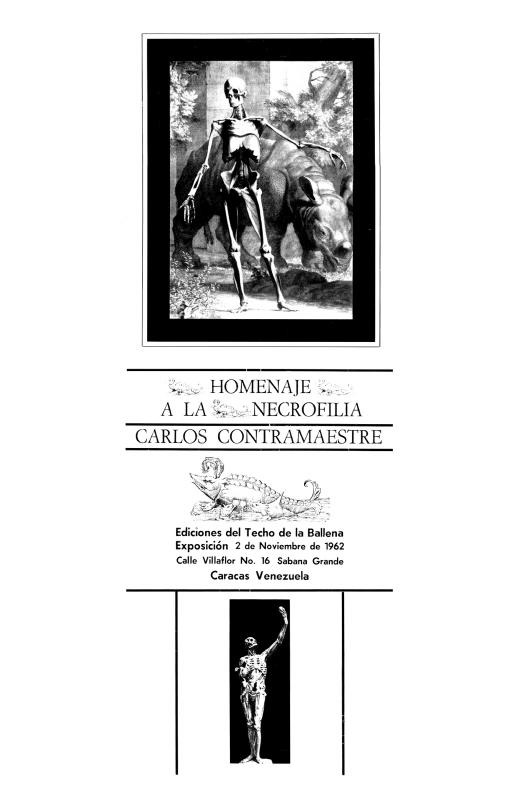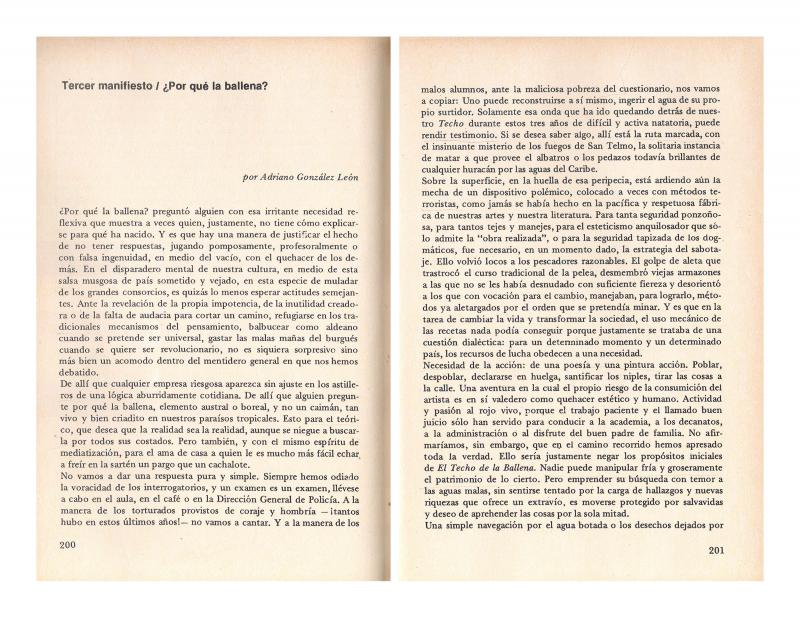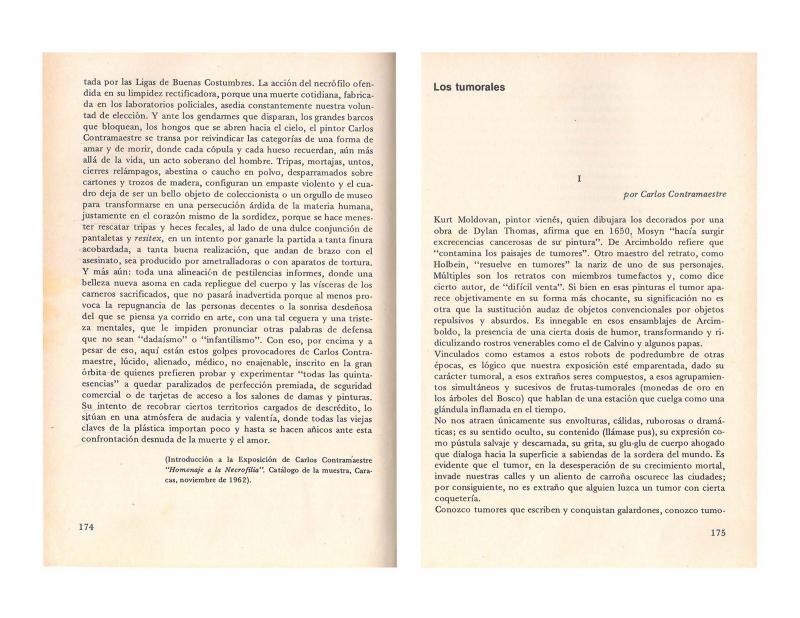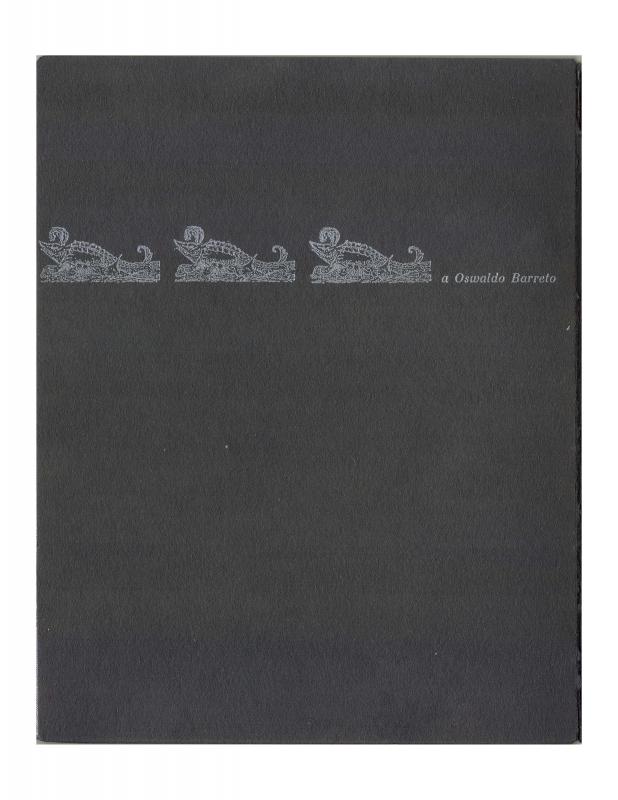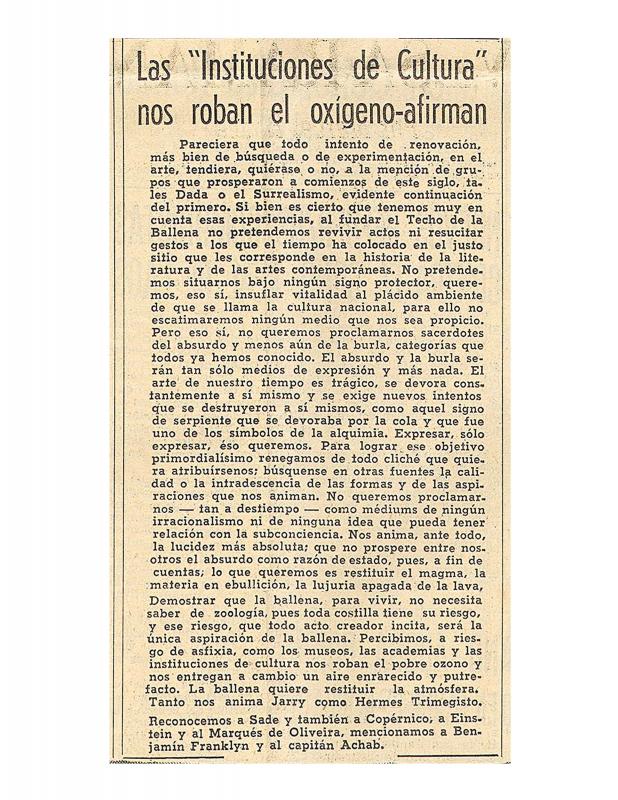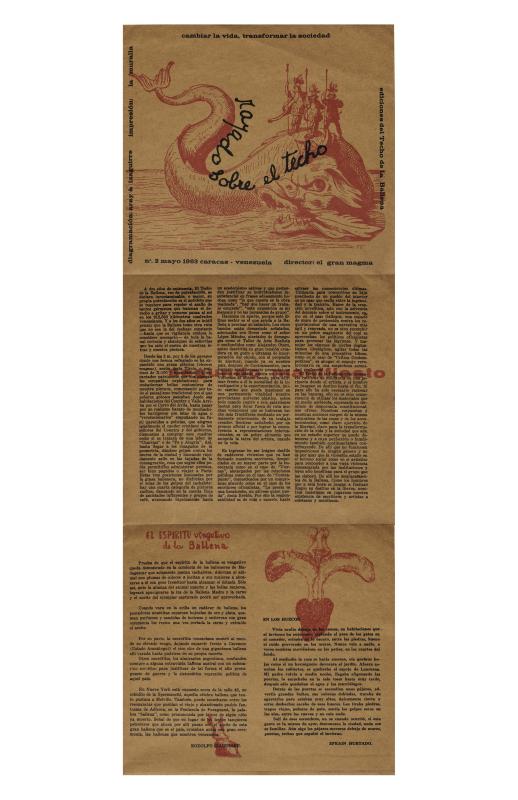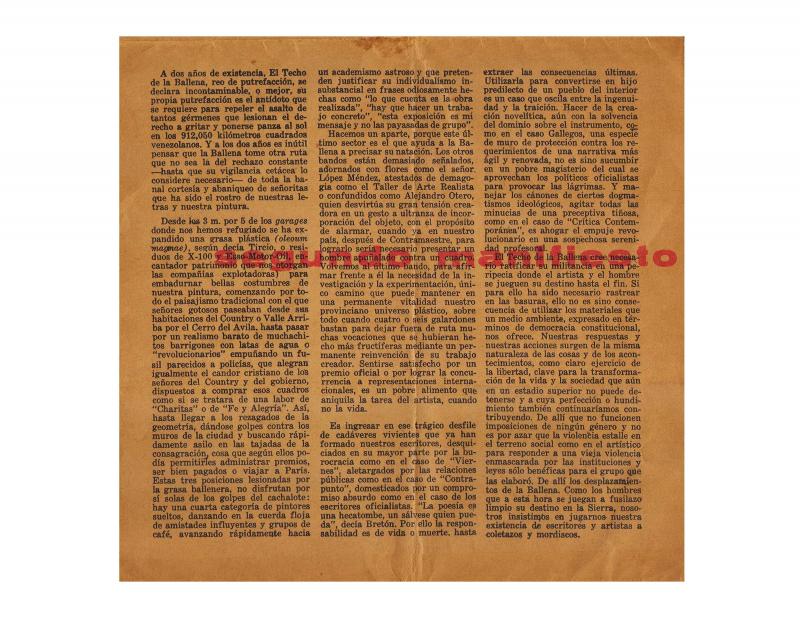El Techo de la Ballena was a group of visual artists and writers from the Venezuelan avant-garde who (from 1961 until 1968) combined a range of different disciplines—visual art, poetry, photography, film, and action art, among others—to create a revolutionary form of art that, in their opinion, challenged and contradicted every traditional socio-cultural value during the decade of greatest political violence that Venezuela had ever experienced. The group saw themselves as the artistic expression of that chaotic period, and viewed guerrilla warfare, intellectual leftist ideas, repression, and cities devastated by the forced and accelerated developmental model of the country’s nascent democracy during the presidency of Rómulo Betancourt (1959–64) as their frame of reference. The visual artists in the group embraced informalism as their aesthetic, to which they added a potent shot of aggressiveness to counter the values of geometric abstraction, traditional landscape painting, and even social realism, and adopted a strategy that was subversive, provocative, irrational, and surrealistic. The group produced numerous publications—including the three issues of the magazine Rayado sobre el Techo—and exhibitions. Members of the group included the Venezuelans Carlos Contramaestre, Juan Calzadilla, Caupolicán Ovalles, Edmundo Aray, Francisco Pérez Perdomo, Salvador Garmendia, Adriano González León, Fernando Irazábal, Daniel González, Gabriel Morera, Gonzalo Castellanos, and Perán Erminy, as well as artists from other countries who were living in Venezuela at the time, such as the Chilean Dámaso Ogaz and the Spaniards J. M. Cruxent, Ángel Luque, and Antonio Moya.
“Para la restitución del magma” was the introductory essay for El Techo de la Ballena’s first group exhibition, and is one of their founding documents. It expresses, in Surrealist terms, the group’s embrace of Informalism, the movement that was taking the Venezuelan art world by storm at that time. Many members of the group (“balleneros”) were already painting in an Informalist style, and showed their work at the two exhibitions that were instrumental in introducing Venezuela to this new language and others like it: Espacios Vivientes, held in Maracaibo in 1960, and Salón Experimental, held that same year in Caracas. The “balleneros’” Informalism, however, which was mainly inspired by the “matter painting” of Antoni Tàpies, acquired certain specific functions and connotations that were intended to force an urgent overthrow of more solemn social and cultural values with an aggressiveness that other versions of the style lacked.
[To read other articles written by members of El Techo de la Ballena, see in the ICAA digital archive by Adriano González León “Homenaje a la necrofilia” (doc. no. 1097543), his introduction to Carlos Contramaestre’s work at the exhibition Homenaje a la necrofilia, 1962; also by González León “Tercer manifiesto: ¿Por qué la ballena?” (doc. no. 1097576); by Juan Calzadilla and Contramaestre “Los tumorales I y II” (doc. no. 1097559), in which they introduce the latter’s exhibition Los Tumorales, in 1963; by Francisco Pérez Perdomo (untitled) “[Hay ciertos rostros de la ciudad…]” (doc. no. 1060288); and by Ángel Rama the prologue known as “Terrorismo en las artes” (doc. no. 1097527). See also by El Techo de la Ballena (untitled) “[Establecer una frontera entre lo cursi y lo pavoso…]” (doc. no. 1059586); “Las ‘Instituciones de cultura’ nos roban el oxígeno, afirman” (doc. no. 1060199); Rayado sobre el techo. Cambiar la vida, transformar la sociedad (doc. no. 1060254); and “Segundo Manifiesto” (doc. no. 1057677)].

